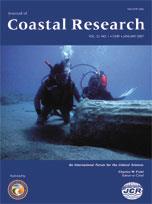Beach erosion has direct consequences for Hawaii's tourist-based economy, which depends on the attraction of beautiful sandy beaches. Within the last century, however, beaches on Oahu and Maui have been narrowed or completely lost, threatening tourism and construction development. In order for the counties and state of Hawaii to implement coastal regulations to prevent infrastructure damage, it is necessary to find a statistically valid methodology that accurately delineates annual erosion hazard rates specific to Hawaii. We compare the following erosion rate methods: end point rate (EPR), average of rates (AOR), minimum description length (MDL), jackknifing (JK), ordinary least squares (OLS), reweighted least squares (RLS), weighted least squares (WLS), reweighted weighted least squares (RWLS), least absolute deviation (LAD), and weighted least absolute deviation (WLAD). To evaluate these statistical methods, this study determines the predictive accuracy of various calculated erosion rates, including the effects of a priori knowledge of storms, using (1) temporally truncated data to forecast and hindcast known shorelines and (2) synthetic beach time series that contain noise. This study also introduces binning of adjacent transects to identify segments of a beach that have erosion rates that are indistinguishable. If major uncertainties of the shoreline methodology and storm shorelines are known, WLS, RWLS, and WLAD better reflect the data; if storm shorelines are not known, RWLS and WLAD are preferred. If both uncertainties and storm shorelines are not known, RLS and LAD are preferred; if storm shorelines are known, OLS, RLS, JK, and LAD are recommended. MDL and AOR produce the most variable results. Hindcasting results show that early twentieth century topographic surveys are valuable in change rate analyses. Binning adjacent transects improves the signal-to-noise ratio by increasing the number of data points.
How to translate text using browser tools
1 January 2007
The Predictive Accuracy of Shoreline Change Rate Methods and Alongshore Beach Variation on Maui, Hawaii
Ayesha S. Genz,
Charles H. Fletcher,
Robert A. Dunn,
L. Neil Frazer,
John J. Rooney
ACCESS THE FULL ARTICLE

Journal of Coastal Research
Vol. 2007 • No. 231
January 2007
Vol. 2007 • No. 231
January 2007
coastal erosion
coastal management
erosion hazard area
Hawaii
shoreline change rates




